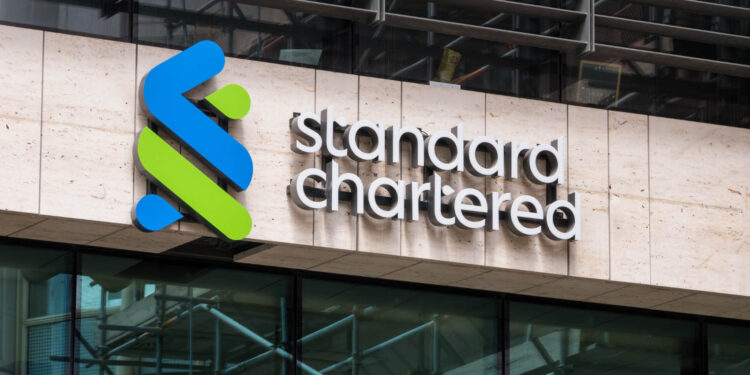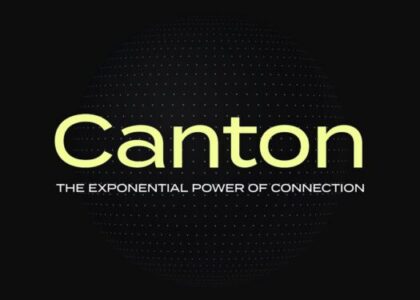Standard Chartered Forecasts Explosive $2 Trillion Growth for Tokenized Real-World Assets by 2028, Ethereum Poised to Dominate
The market for tokenized real-world assets (RWA) is on the cusp of an extraordinary boom, with Standard Chartered projecting its value to soar to an astounding $2 trillion by 2028. This represents a staggering increase of over 5,600% from its current approximate size of $35 billion (excluding stablecoins), signaling a transformative shift in global finance.
Stablecoins Paved the Way for On-Chain Revolution
According to Geoffrey Kendrick, Head of Digital Asset Research at Standard Chartered, stablecoins have been instrumental in laying the groundwork for this monumental expansion. In a recent report, Kendrick highlighted how stablecoins have significantly boosted market awareness, enhanced on-chain liquidity, and spurred lending activities. These developments have enabled other asset classes, such as money market funds and equities, to transition onto blockchain networks at scale over recent years.
Ethereum’s Unrivaled Reliability to Drive RWA Tokenization
Kendrick anticipates that the vast majority of this projected $2 trillion in tokenized asset activity will unfold on the Ethereum blockchain. His rationale is clear: Ethereum’s “unparalleled reliability.”
He emphasized that the Ethereum mainnet has operated flawlessly for over a decade without a single network outage, establishing a foundation of stability and trust. “In our view,” Kendrick stated, “whether other public chains are faster or cheaper is simply irrelevant.” This unwavering technical integrity positions Ethereum as the premier platform for mainstream RWA tokenization.
The Essence of Tokenization: Efficiency and Transparency
The core principle behind tokenization is the conversion of traditional financial assets into digital tokens that can be seamlessly traded and settled on a blockchain. This process dramatically enhances the efficiency and transparency of asset circulation on a global scale, unlocking new possibilities for capital markets.
A Detailed Look at the $2 Trillion RWA Market by 2028
Standard Chartered’s forecast provides a granular breakdown of how this $2 trillion market will be distributed:
- Tokenized Money Market Funds: $750 Billion — Expected to be a major driver, primarily fueled by corporations leveraging stablecoins as efficient liquidity management tools.
- Tokenized Listed Equities: $750 Billion — This segment is poised for significant growth, becoming a pivotal trend for on-chain equities once regulatory clarity emerges in the United States and the full potential of Decentralized Finance (DeFi) is unleashed.
- Tokenized Funds: $250 Billion — A substantial portion of the market will be dedicated to various tokenized investment funds.
- Other Liquid & Illiquid Assets: $250 Billion — The remaining quarter-trillion dollars will encompass a diverse range of assets, including private equity, commodities, corporate bonds, and real estate, demonstrating the broad applicability of RWA tokenization.
DeFi’s Evolution: From Crypto-Native to a Challenge for TradFi
Kendrick notes that Decentralized Finance (DeFi) initially catered to a crypto-native audience, offering services like trading, lending, and leverage for digital assets. However, the burgeoning liquidity provided by stablecoins has dramatically broadened the scope of on-chain lending and asset transfer.
“Stablecoins have created three pivotal conditions: heightened public awareness, escalating on-chain liquidity, and robust lending activities for fiat-pegged products,” Kendrick explained. “These factors have paved the way for DeFi’s expansion, enabling it to present a genuine and substantial challenge to traditional finance (TradFi).”
Lending and RWA Tokenization: The Ultimate Disruptors
He further emphasized that “lending” and “RWA tokenization” stand out as the two most profoundly disruptive areas within this evolving landscape. The prospect of RWA being freely traded on decentralized exchanges (DEXs) could fundamentally reshape the role and operations of conventional stock exchanges, potentially redefining how securities are bought, sold, and managed.
The “Self-Reinforcing Liquidity” Cycle
Kendrick eloquently describes the DeFi ecosystem as entering a phase of “self-generating liquidity”:
“Liquidity brings new products, and new products attract more liquidity. We believe this self-reinforcing cycle of DeFi growth has officially begun.”
This dynamic feedback loop promises continued innovation and expansion, solidifying DeFi’s position at the forefront of financial evolution.
新興市場恐掀「存款大逃亡」!渣打預估將有「1 兆美元」湧入穩定幣
Disclaimer: This article is provided for market information purposes only. All content and views are for reference and informational purposes only and do not constitute investment advice. They do not represent the views or positions of the publisher. Investors should conduct their own due diligence and make independent investment decisions. The author and publisher will not be held responsible for any direct or indirect losses incurred by investors based on the information presented herein.





